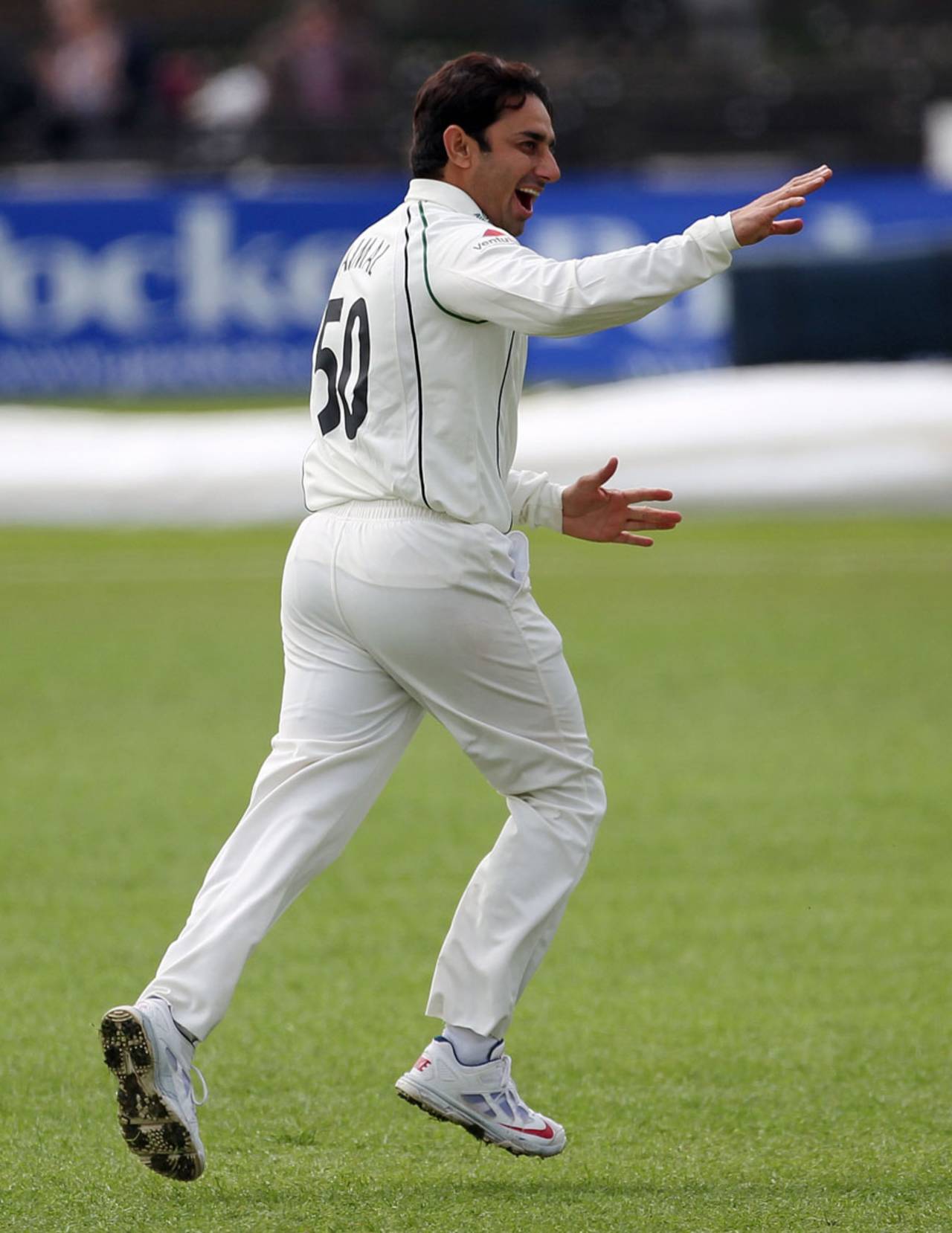A picture is worth a thousand words, the cliché goes, but sometimes a picture serves other purposes: it reopens a thousand debates, all of which have been done to death, and none of which are ever likely to change pre-existing biases. No wonder this stuff is so popular on Twitter.
One such
picture doing the rounds on the interwebs is of
Saeed Ajmal during his
rout of Essex. And lo, Pandora's box was opened. Cue hysteria, name-calling, and those who said much without saying anything. It was time to discuss
"mystery bowling" again.
But through all the bovine feces there was very little new information added. Here is what we know: the 15-degree rule applies to the flex, or the straightening, of the elbow while bowling, rather than to just the bend in the elbow. The pointlessness of using a single still photograph as evidence is apparent immediately.
Twenty-eight months after George Dobell
explained the intricacies of Ajmal's case, the number of debaters still ignorant of the facts is striking.
We know that bowlers have repeatedly been warned or banned following tests (as Johan Botha, Shoaib Malik and Shane Shillingford will attest), to the point where their careers have been altered. So again the idea that no one is being punished for dodgy actions or that testing is useless ought not to gain traction. And we also know that Dr Paul Hurrion, the ICC's head biomechanics analyst, says regarding lab tests: "There are stumps to aim at but no batsman, and we use synchronised footage of the player bowling in a match to check that they are not just going through the motions or altering their style. They have to replicate the speed of a delivery from a match, the deviation and the revolutions of the ball." And I do find it a little odd that the two bowlers most often accused, Murali and Ajmal, are also two who were cleared after testing, unlike many others.
Eventually every such conversation tends to bring to the fore someone who believes it is all an ICC conspiracy, initially designed to keep Murali in the game. This school of thought believes that there is collusion within the ICC about something that at least two of the Big Three countries are quite clearly against. The opposition argues that, in fact, the altering of the rules occurred as we began to realise the limitations of the human body when it came to assessing bowling actions: there are instruments far better placed to do so than the naked eye. I find the latter argument more convincing.
In a way you could compare it to the case of the off-side rule in football. Slight changes in the rules through the '90s (mostly to do with whether a player is active during a passage of play or not) seemed to confound many pundits, who refused to understand the new rule just because it wasn't the one they were accustomed to. For years the co-commentator saying he didn't understand the new off-side rule - followed inevitably by a chuckle - became an irritating norm in most matches. Bizarrely these ex-players also seem to be the ones who continued to propagate the idea of the off-side rule being one that women "can't fathom". The irony, quite clearly, is lost on them.
Returning to the cricket issue: it reinforces bowlers' status as second-class citizens. More than a century ago Bernard Bosanquet called his invention, the googly, "not unfair, only immoral". These are not words that ever seem likely to be applied to changes in bat technology and other ways that batsmen have benefited over the past quarter century or so, but every bowling innovation is considered unfair or immoral till proven otherwise. And as we have learned, sometimes even proving otherwise is not enough.
The last few decades have seen the rise of bouncer barrages, reverse swing and the doosra - each of which has been maligned and castigated until it was adopted by those who suffered from it. Then the term "cheat" is not applied to the practitioner; instead, he becomes an artist.
Last weekend Saeed Ajmal
asked for an explanation from the ECB over comments made by Stuart Broad. Wasim Akram
asked for an apology nine years ago, and he is yet to receive one. I'd tell Saeed and Wasim to take inspiration from another genius who took on the establishment and its preconceived biases and suffered for it; a man who showed that the naked eye might not see the truth. Galileo did receive an apology from the Catholic church: 350 years after his death.
The debate also shows a difference in attitude between cultures towards the rules. There's a reason why the football establishment in northern Europe differs so much from that in Latin America in its views regarding diving and "cheating". The first world views rules and regulations differently than the third world. In the former, systems are paramount, almost sacred; in the latter, the rules exist as guidelines, to be bent occasionally but not broken. It's no surprise that most of the better practitioners of modern offspin bowling come from the third world, and most detractors from the first world. Make of that what you will.
Galileo may have received his apology, but that doesn't mean the science-versus-sense "debates" have ceased. There will still be those who believe global warming isn't real because last winter was really cold. And there will still be those who can determine the extent to which an elbow straightens from a still photograph, or with their naked eyes. I think I'll continue to side with the guys in the lab coats.
Hassan Cheema is a sports journalist, writer and commentator, and co-hosts the online cricket show Pace is Pace Yaar. He tweets here
